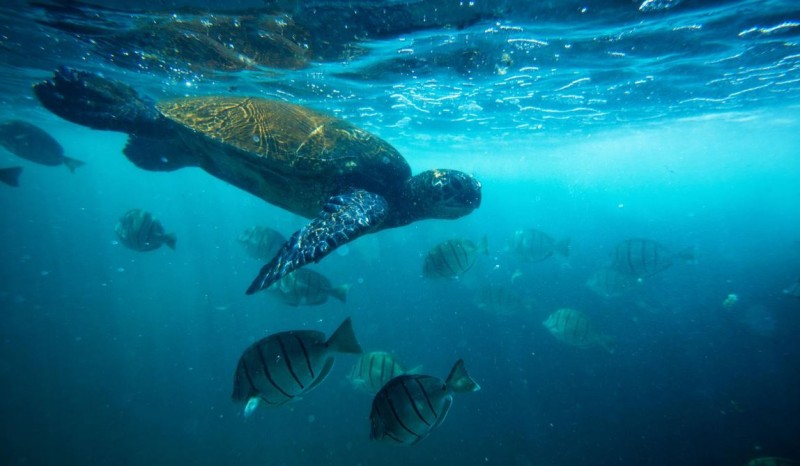
The deep sea is a mysterious and fascinating realm that covers more than two-thirds of our planet. It holds countless secrets and is home to a diverse range of extraordinary marine life. In this article, we will embark on a captivating journey to explore the wonders of the deep sea and delve into the remarkable creatures that inhabit its depths.
1. Introduction: The Enigmatic Deep Sea
The deep sea, also known as the abyssal zone, is a vast expanse of the ocean that lies beyond the reach of sunlight. It begins where the sunlight fades, around 200 meters below the surface, and extends down to the deepest trenches, plunging to depths of over 10,000 meters. This realm remains largely unexplored, and its mysteries continue to captivate scientists and researchers worldwide.
2. The Abyssal Zone: A World of Darkness and Extremes
The abyssal zone is a realm of perpetual darkness, extreme pressure, and chilling temperatures. It is a place where life has adapted to survive in the most hostile conditions on Earth. The lack of sunlight has given rise to unique ecosystems that rely on alternative energy sources, such as chemosynthesis.
3. Bioluminescence: Nature's Dazzling Light Show
One of the most captivating phenomena of the deep sea is bioluminescence. Many deep-sea organisms possess the ability to produce their own light, creating a mesmerizing display that illuminates the darkness. Bioluminescence serves various purposes, from attracting prey to communication and camouflage.
4. Adaptations for Survival: Thriving in Harsh Conditions
To thrive in the deep sea, organisms have evolved remarkable adaptations. These include bioluminescent organs, large mouths and stomachs for consuming scarce prey, and elongated bodies for efficient movement through the water. Some deep-sea creatures have even developed transparent bodies or bioluminescent lures to attract prey.
5. Deep-Sea Fish: Masters of the Abyss
Deep-sea fish exhibit extraordinary diversity in their forms and behaviors. They come in various shapes and sizes, from the grotesque anglerfish with its luminescent lure to the gracefully streamlined viperfish. These creatures have evolved incredible survival strategies and often possess specialized sensory adaptations to navigate in the darkness.
6. Deep-Sea Invertebrates: Beauty in Unexpected Forms
The deep sea is home to a plethora of mesmerizing invertebrates. Delicate glass sponges, vibrant coral communities, and stunning jellyfish species adorn the ocean floor. Some invertebrates, such as the deep-sea octopus and giant isopods, exhibit astonishing size and unique characteristics that make them truly remarkable.
7. Hydrothermal Vents: Oases of Life in a Barren Landscape
Deep-sea hydrothermal vents are extraordinary ecosystems that thrive in complete darkness and extreme temperatures. These vents spew forth mineral-rich, superheated water, creating an oasis of life in an otherwise desolate environment. Unique organisms, such as tubeworms, vent crabs, and giant clams, have adapted to harness the energy from these vents.
8. Coral Reefs of the Deep: Hidden Gems of the Ocean
While coral reefs are commonly associated with shallow tropical waters, there are also deep-sea coral reefs that exist in the depths of the ocean. These hidden gems harbor a rich biodiversity of corals, sponges, and fish species. They provide crucial habitats for many deep-sea organisms and contribute to the overall health of the marine ecosystem.
9. Deep-Sea Exploration: Tools and Technologies
Exploring the deep sea is no easy feat, but advancements in technology have allowed us to gain valuable insights into this enigmatic world. Submersibles, remotely operated vehicles (ROVs), and autonomous underwater vehicles (AUVs) enable scientists to study and document deep-sea life, collect samples, and capture breathtaking images and videos.
10. Conservation of Deep-Sea Ecosystems: Preserving Our Underwater Heritage
With increasing human activities and potential threats to deep-sea ecosystems, it is crucial to prioritize their conservation. Sustainable fishing practices, protecting vulnerable areas, and raising public awareness about the importance of deep-sea ecosystems are essential for their long-term survival.
11. Conclusion
The deep sea holds a wealth of wonders waiting to be discovered. From the mysterious creatures that inhabit its depths to the mesmerizing phenomena that occur in this realm of darkness, the deep sea never ceases to amaze. By continuing to explore, study, and protect these unique ecosystems, we can ensure the preservation of our underwater heritage for generations to come.
Rajasthan : 8 Popular Place To Travel